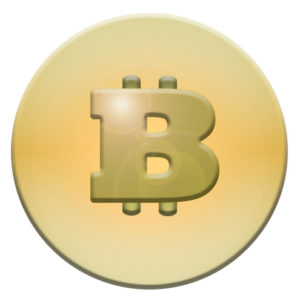OK, get ready for your brain to start hurting.
This article describes why financial institutions may become passe. Why the gatekeepers of our monetary system may become unnecessary. How transactional trust may replace institutional trust.
It is all about crypto currency. So what is that? Let’s look to Wikipedia for an explanation. A cryptocurrency (or crypto currency) is a medium of exchange using cryptography to secure the transactions and to control the creation of additional units of the currency. Cryptocurrencies are a subset of alternative currencies, or specifically o f digital currencies.
f digital currencies.
Bitcoin became the first decentralized cryptocurrency in 2009. Since then, numerous cryptocurrencies have been created. These are frequently called altcoins, as a blend of bitcoin alternative. Cryptocurrencies use decentralized control[6] as opposed to centralized electronic money/centralized banking systems. The decentralized control is related to the use of bitcoin’s blockchain transaction database in the role of a distributed ledger.
Further, BEN writes “Bitcoin was developed as a ‘cryptocurrency’, where encryption algorithms are exploited to secure transactions. No one is in charge, no one is the owner and records are completely decentralized. Bitcoin has already inspired the development of 700 other cryptocurrencies.
Bitcoin was the first decentralized digital currency using peer-to-peer technology to function without an intermediary, such as a financial institution. Peer-to-peer (P2P) refers to the sharing of files directly between users and servers in the network, without the need of a central server/party. This system enabled, for the first time in a transaction system, the network to reach consensus without the need of information on user identities and without trust relationships.”
So in a nutshell, Bitcoin is a ledger. A secure and managed ledger, but a ledger none the less. In an article on blockchain systems, Bitcoin’s global ledger is pseudo-anonymous. That is, it can be as private or as transparent as one desires. It keeps a record of all transactions for eternity, but whether that transaction is attributable to an entity depends on the entity itself. If one does not reveal ownership of a Bitcoin address, it is difficult to attribute ownership.”
We often maintain inventory control in much the same manner. In our inventory control database software, we provide eternal visibility to all transactions. We can reproduce on-hand balances at any point in time and we can create an audit trail going back years. Is this necessary? No, but it is valuable.
So how are these transactions processed and verified? Bitcoin Mining.
Motherboard.com tells us, “In order to keep a record of everything, bitcoin has a ledger known as the “block chain,” a shared database of all successful transactions. Every transaction that occurs must be broadcast to the bitcoin network and everyone connected to the bitcoin network has a copy of the block chain.
The purpose of bitcoin miners is to verify these transactions and then add groups of transactions, called blocks, to the block chain. This process occurs roughly every 10 minutes. For every block added, the successful miner receives a certain amount of bitcoins for his troubles, plus transaction fees. The reward started out at 50 bitcoins, but it’s cut in half every 4 years. Right now, you get get 25 bitcoins for every block mined.
Anyone can technically become a miner. The software is ready to download, all you have to do is contribute raw computing power, which means your main recurring costs are electricity bills. If you solve the next block, the spoils are yours. The more processing power at your disposal, the greater your mining ability.
But here’s the kicker. Built into the model is a “difficulty” metric, which is recalculated whenever 2016 blocks are added. As the speed of mining goes up (as more processing power is added to the system), the difficulty will increase proportionately to compensate in order to maintain the rate of one block every 10 minutes.
What this means is that your ability to mine bitcoins isn’t necessarily about absolute computing power, but rather your computing power relative to other mines. Of course, in the end, that still means you’re going to want the most powerful hardware possible if you want to maximize your mining ability. But it also means that if you don’t keep pace, you’re going to be left behind. “
So who takes Bitcoin now? Here is a partial list:
- WordPress.com – An online company that allows user to create free blogs
- Overstock.com – A company that sells big ticket items at lower prices due to overstocking
- Subway – Eat fresh
- Namecheap – Domain name registrar
- Bitcoin.Travel – a travel site that provides accommodation, apartments, attractions, bars, and beauty salons around the world
- Pembury Tavern – A pub in London, England
- Old Fitzroy – A pub in Sydney, Australia
- The Pink Cow – A diner in Tokyo, Japan
- Virgin Galactic – Richard Branson company that includes Virgin Mobile and Virgin Airline
- The Pirate Bay – BitTorrent directories
- Reddit – You can buy premium features there with bitcoins
- Zynga – Mobile gaming
- PayPal / Ebay – Credit card / payment processor / Auction
- Tesla – The car companyOkCupid – Online dating site
- 4Chan.org – For premium services
- EZTV – Torrents TV shows provider
- Mega.co.nz – The new venture started by the former owner of MegaUpload Kim Dotcom
- Lumfile – Free cloud base file server – pay for premium services
- Etsy Vendors – 93 of them
- PizzaForCoins.com – Domino’s Pizza signed up – pay for their pizza with bitcons
- Tigerdirect – Major electronic online retailer
- CheapAir.com – Travel booking site for airline tickets, car rentals, hotels
- Expedia.com – Online travel booking agency
- Zappos – Online retailer
- Whole Foods – Organic food store (by purchasing gift card from Gyft)
